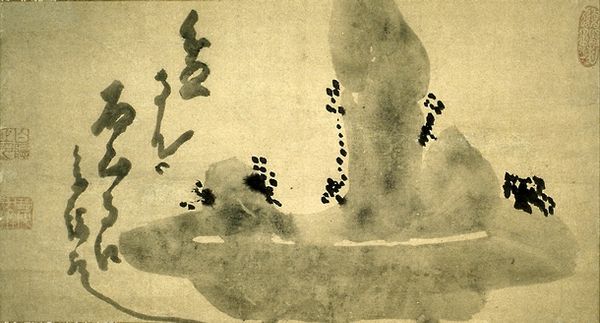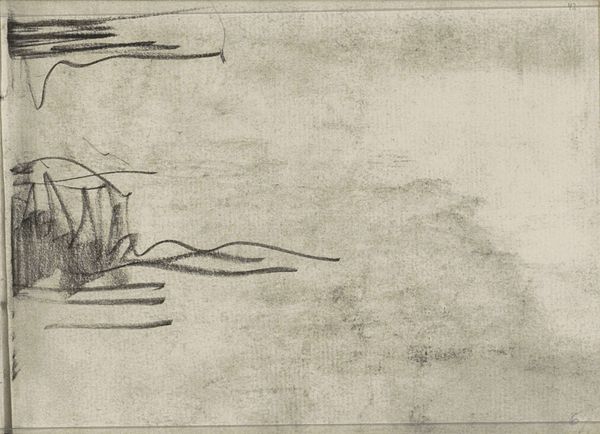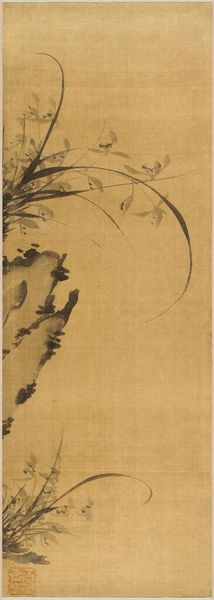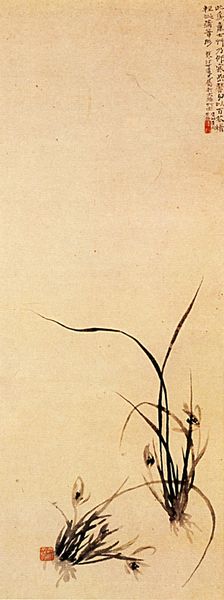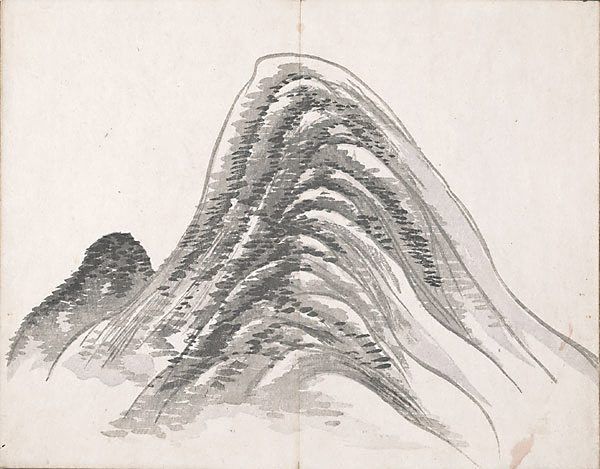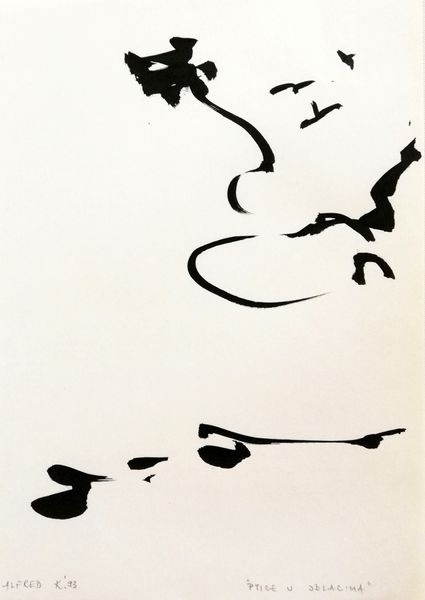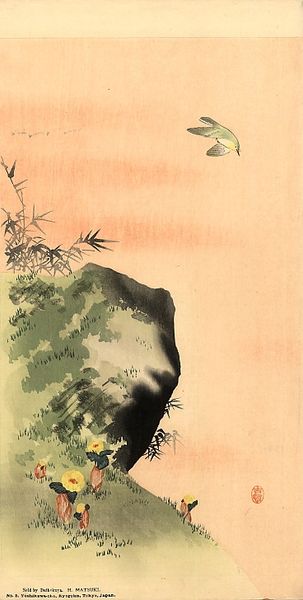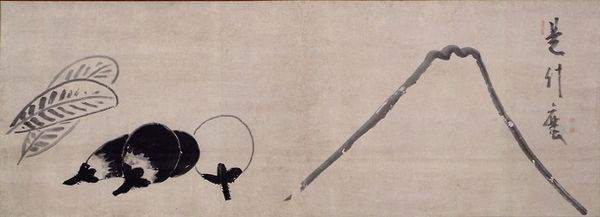
drawing, ink
#
drawing
#
asian-art
#
landscape
#
ink
#
abstraction
#
line
Copyright: Public domain
Sengai Gibon, a Zen Buddhist monk, made this ink-on-paper painting of Mount Fuji in Japan sometime in the late 18th or early 19th century. It shows us not only the iconic mountain, but also how an artist’s practice can embody a particular cultural and social moment. Sengai belonged to the Rinzai school of Zen Buddhism, which emphasizes direct experience and intuitive understanding, often expressed through art. The simplicity of the image, almost a caricature of the mountain, reflects Zen principles of minimalism and directness. During Sengai’s time, Japan was under the rule of the Tokugawa shogunate, a period marked by relative peace, economic growth, and social stability. Zen Buddhism enjoyed patronage from the ruling class and influenced various aspects of Japanese culture, from tea ceremonies to martial arts. As art historians, we can look at Sengai’s work through the lens of religious institutions and social structures, using historical documents, religious texts, and cultural studies to understand its deeper cultural significance.
Comments
No comments
Be the first to comment and join the conversation on the ultimate creative platform.
